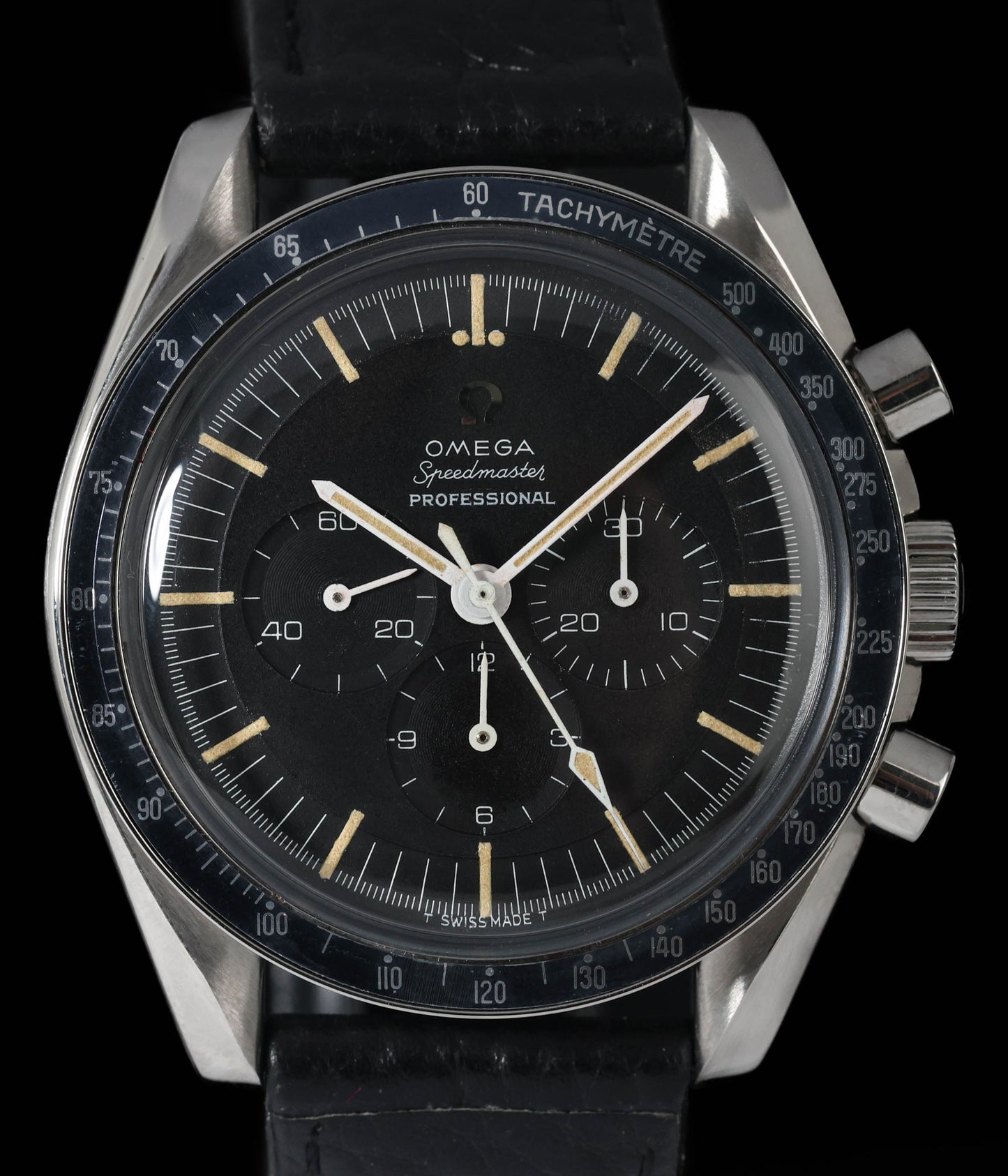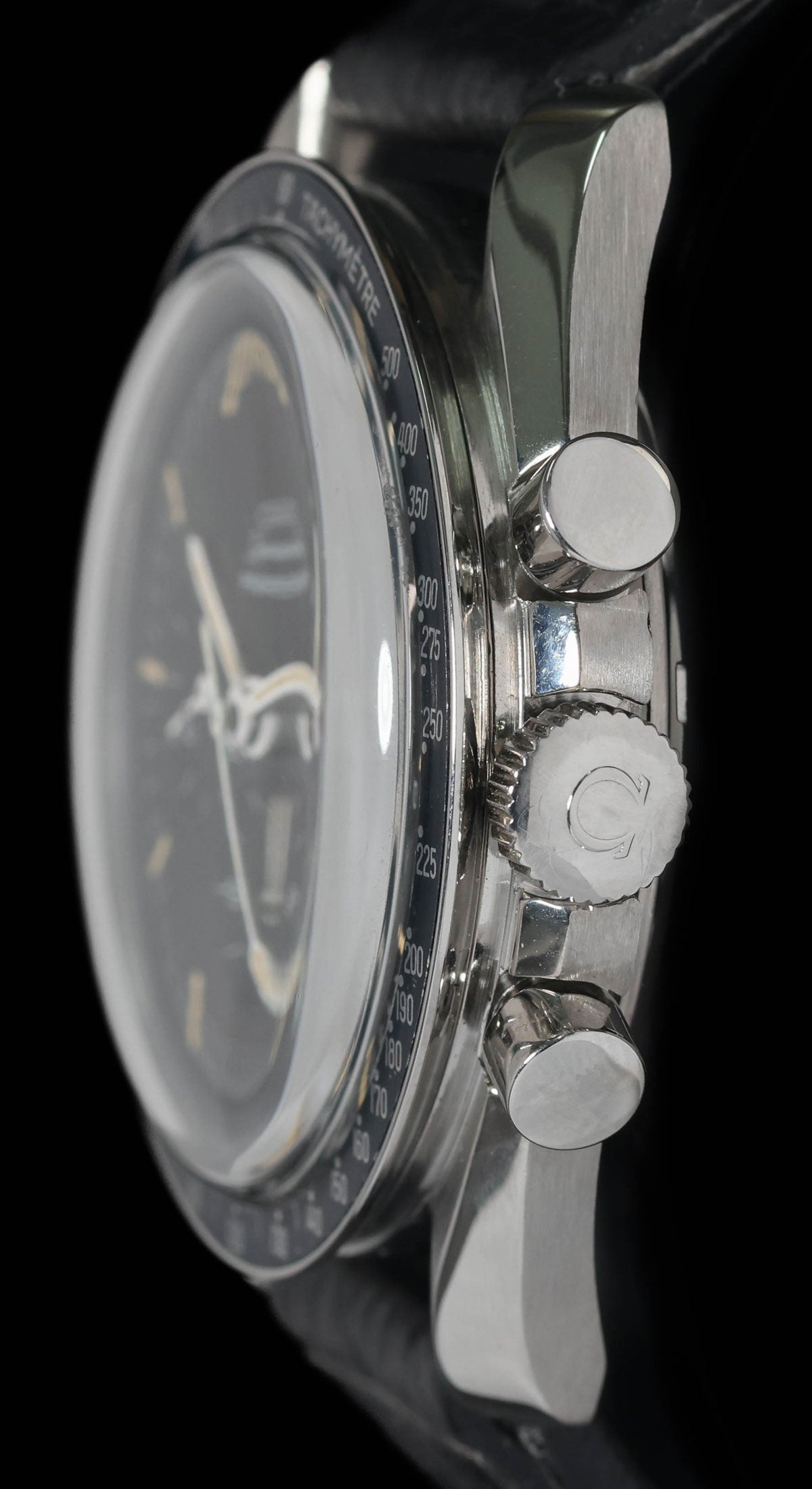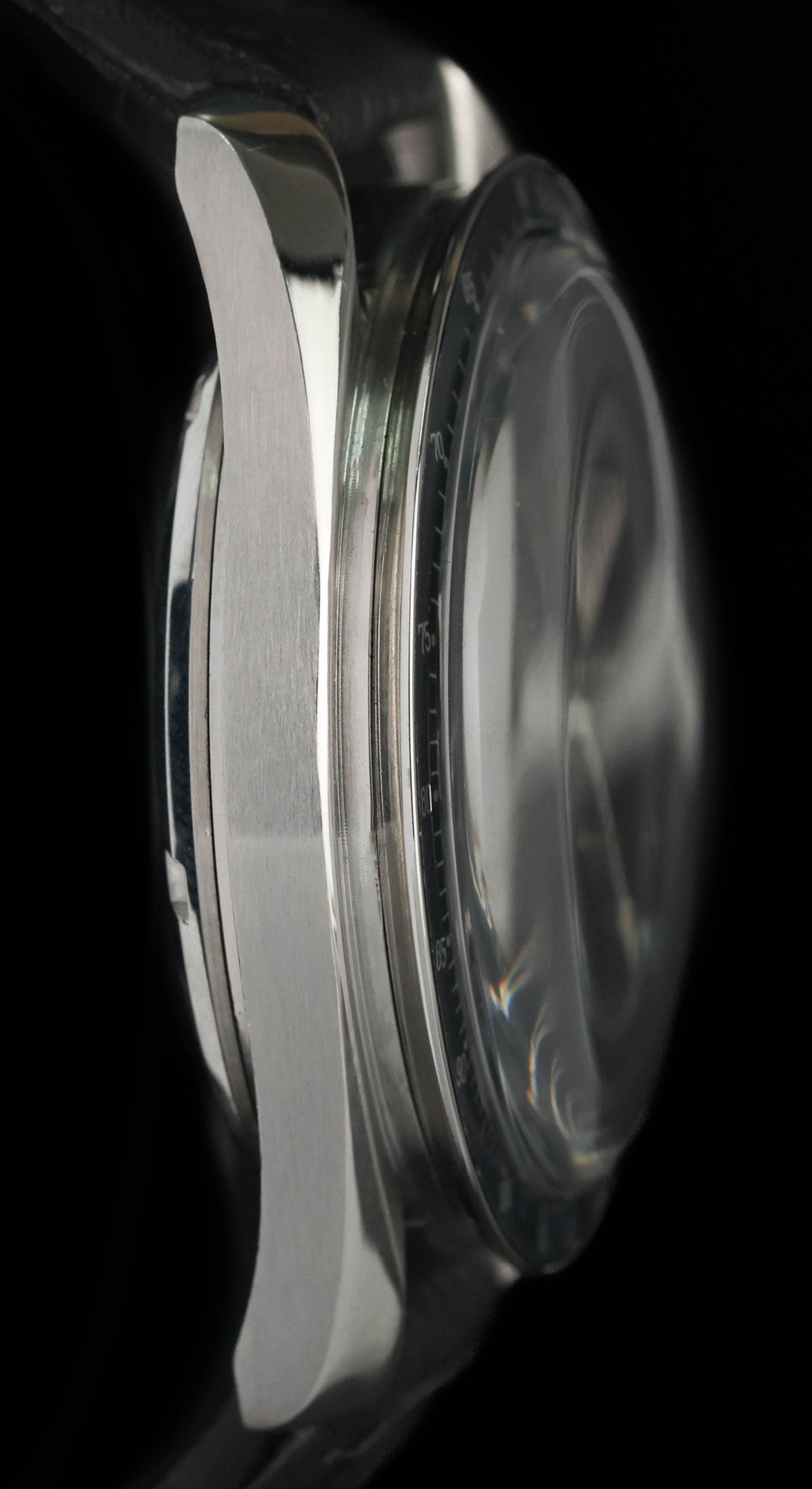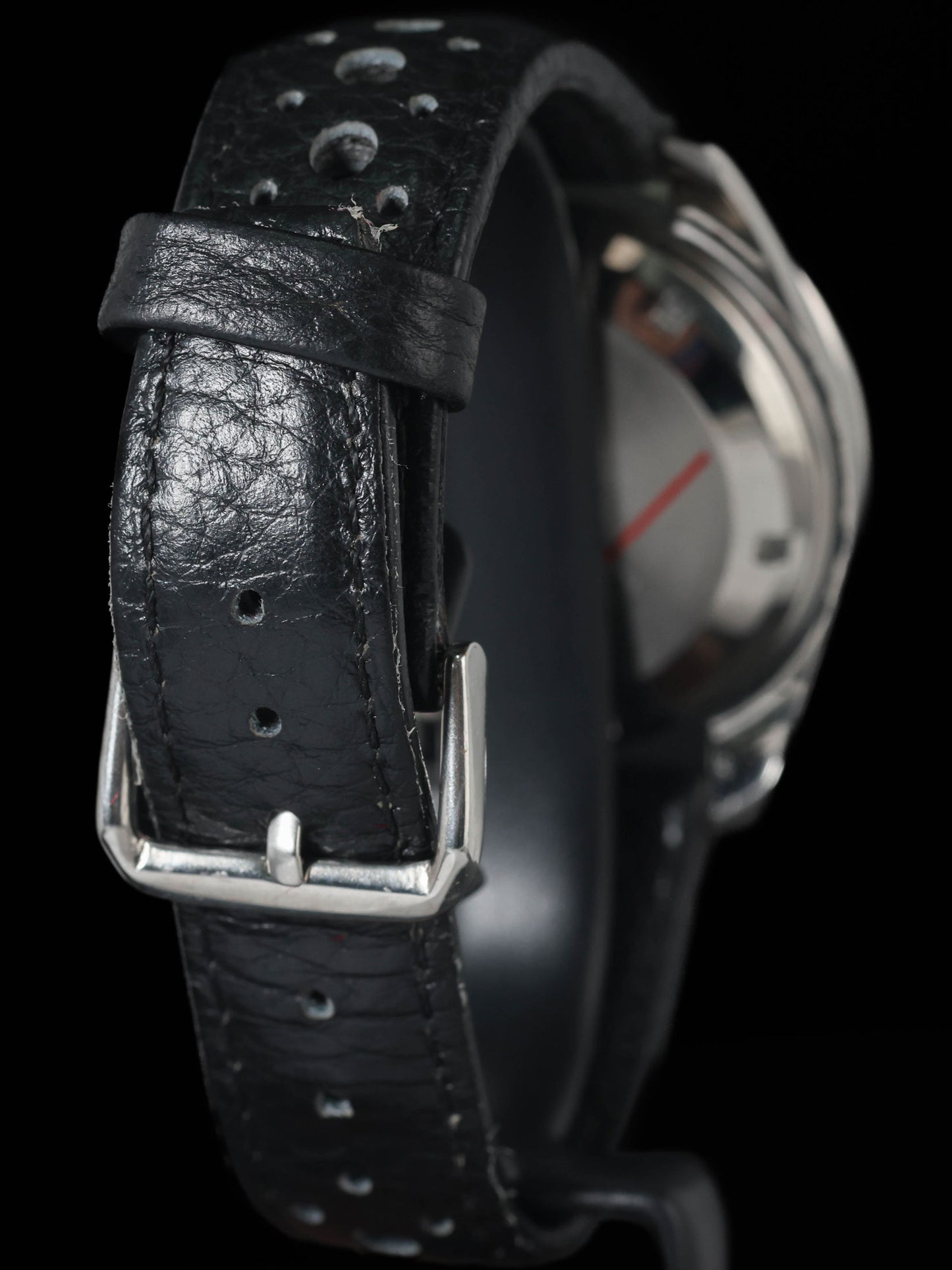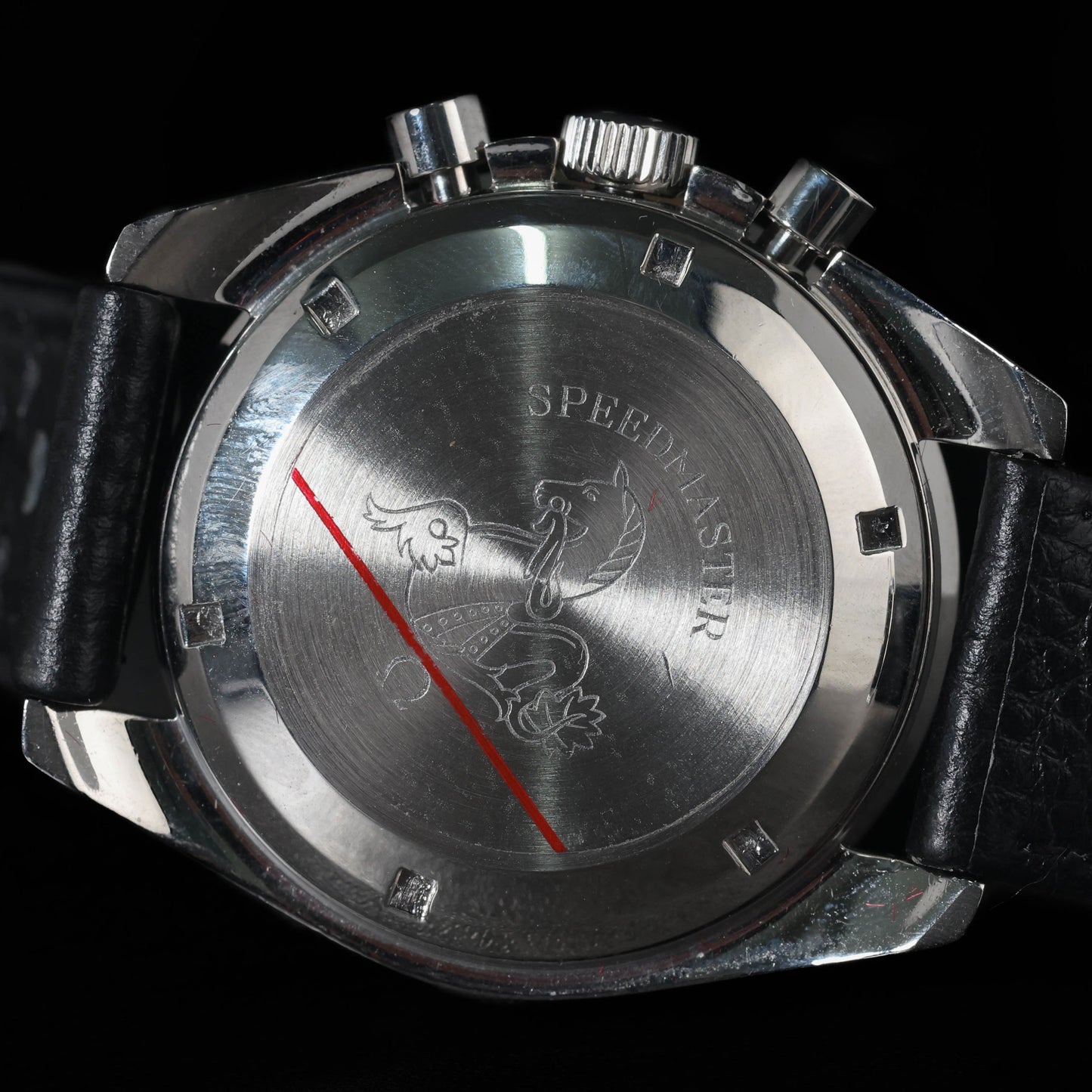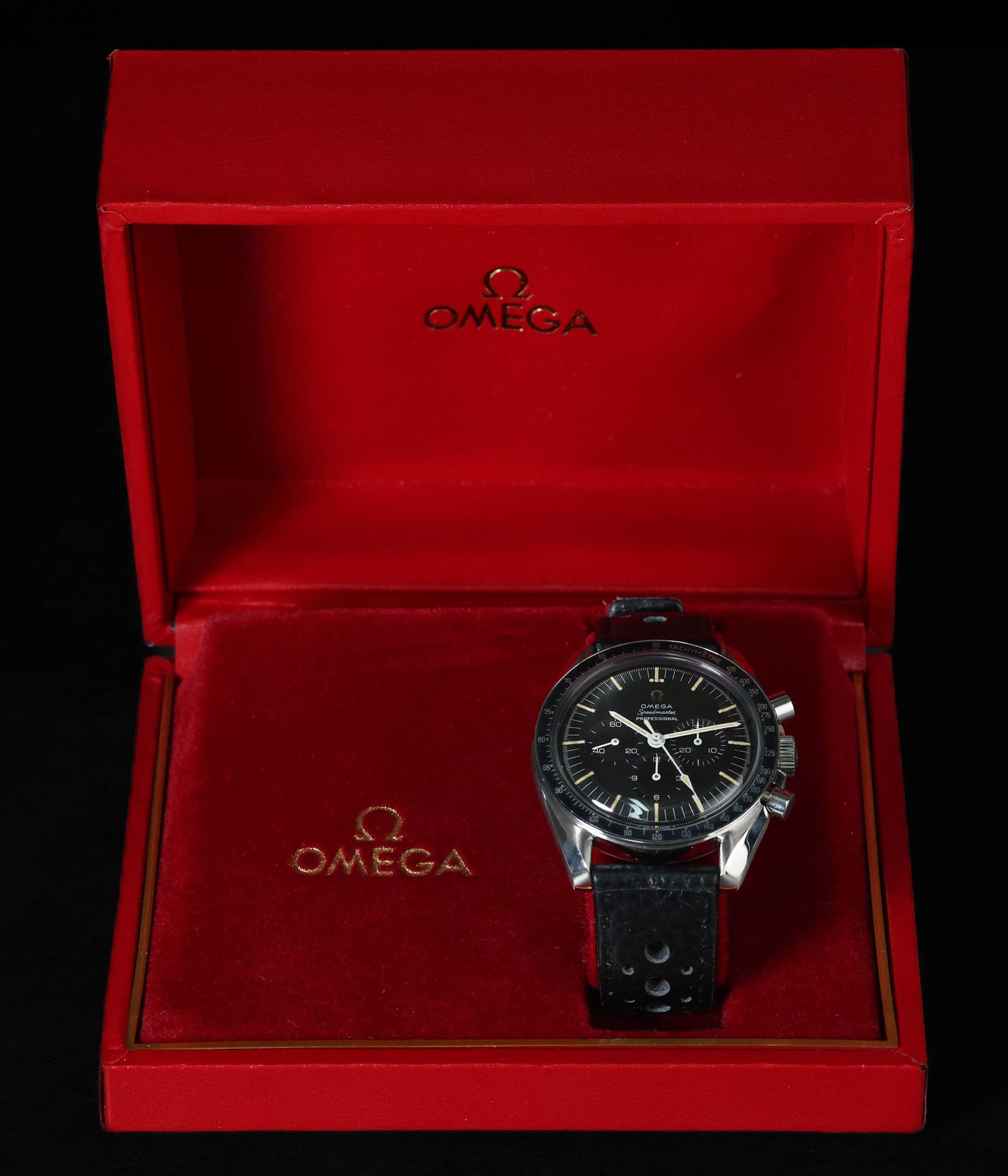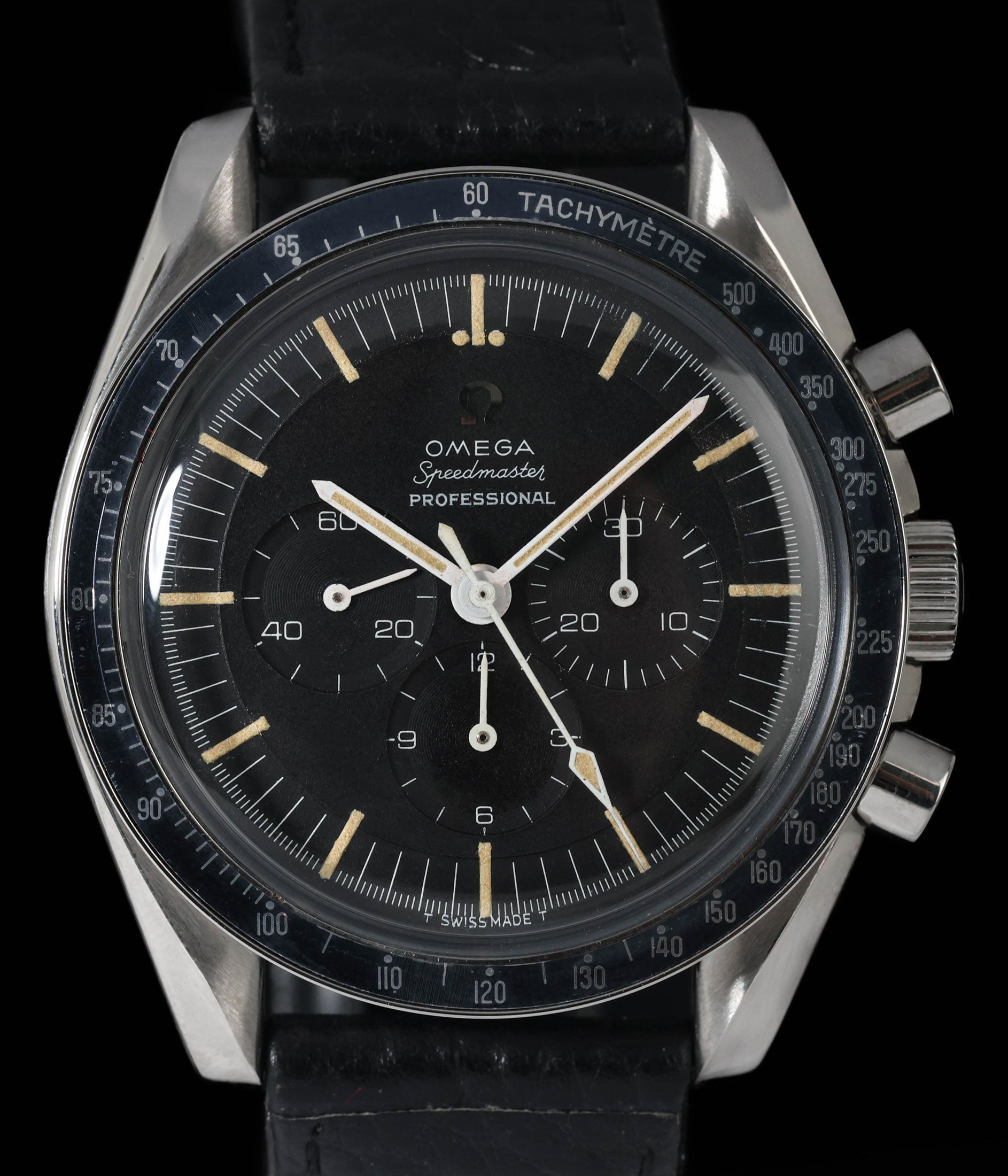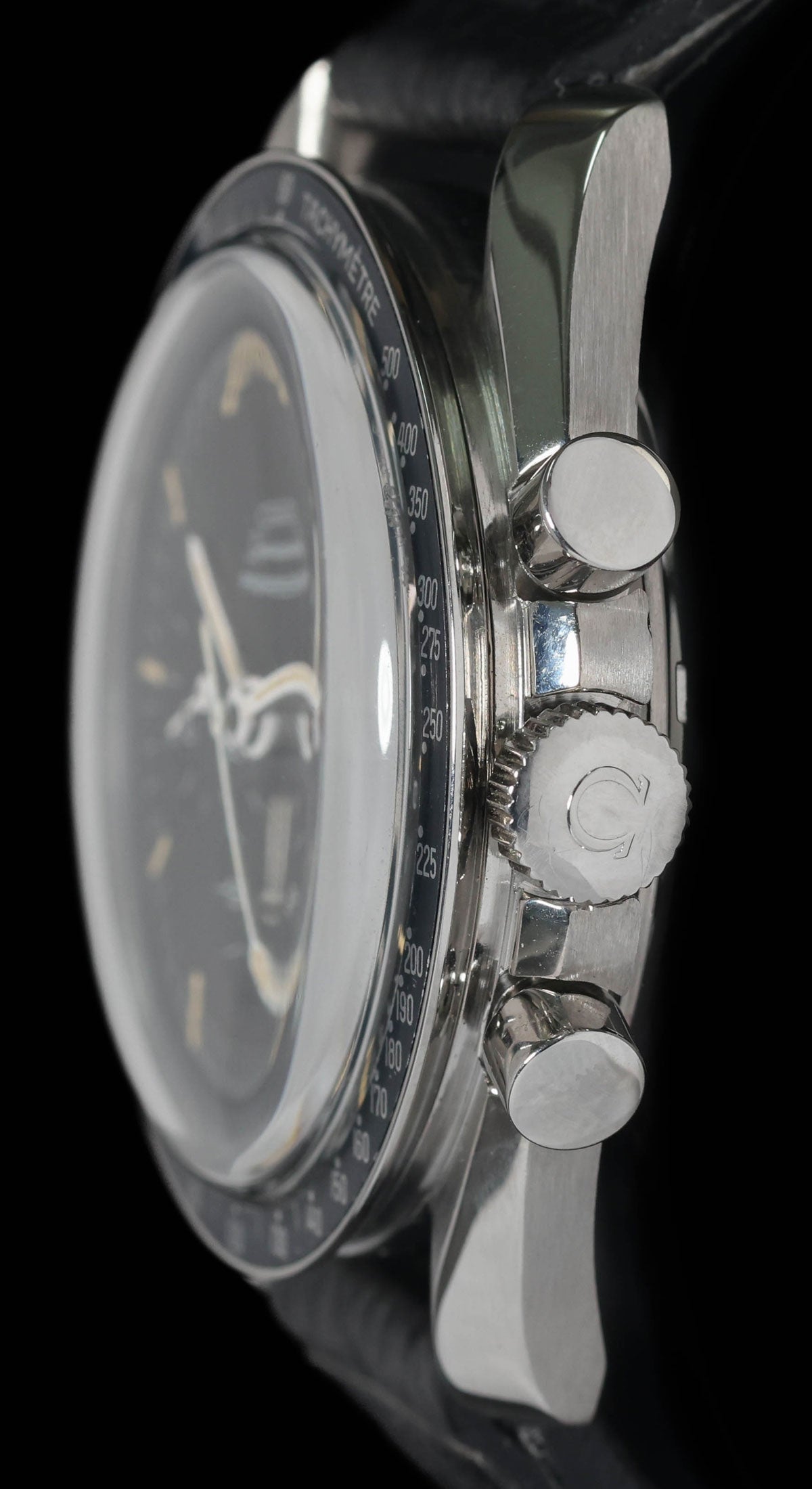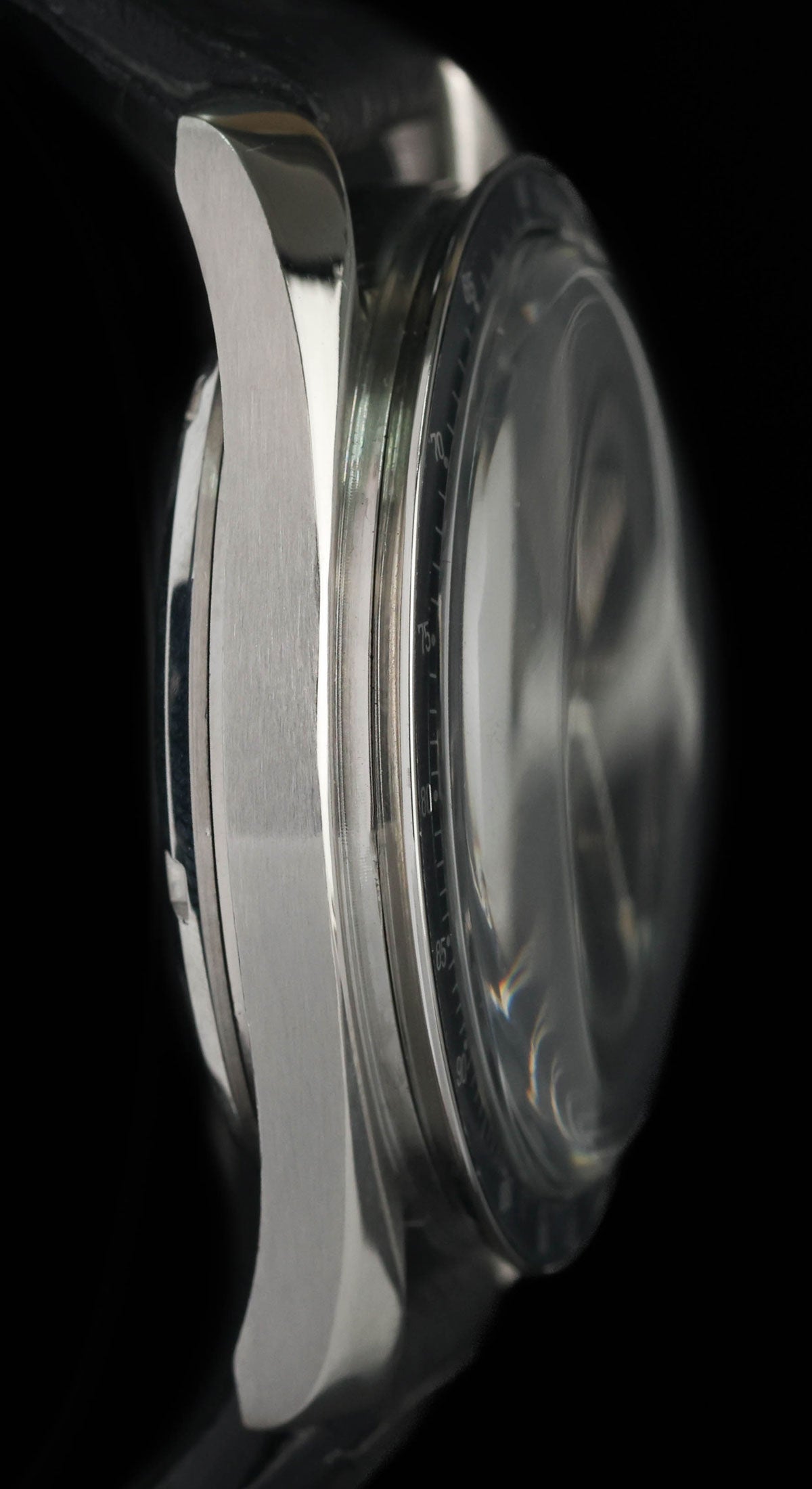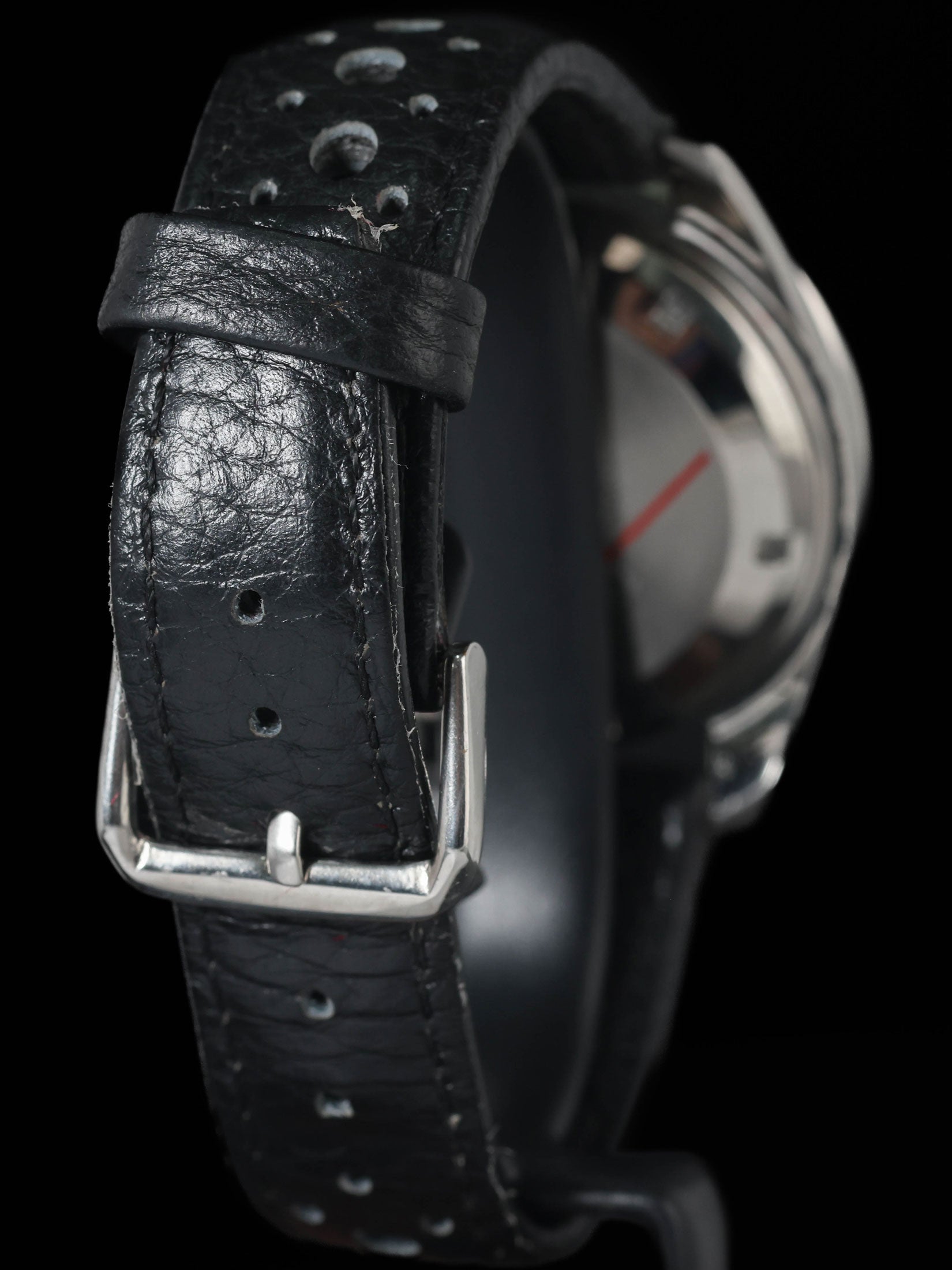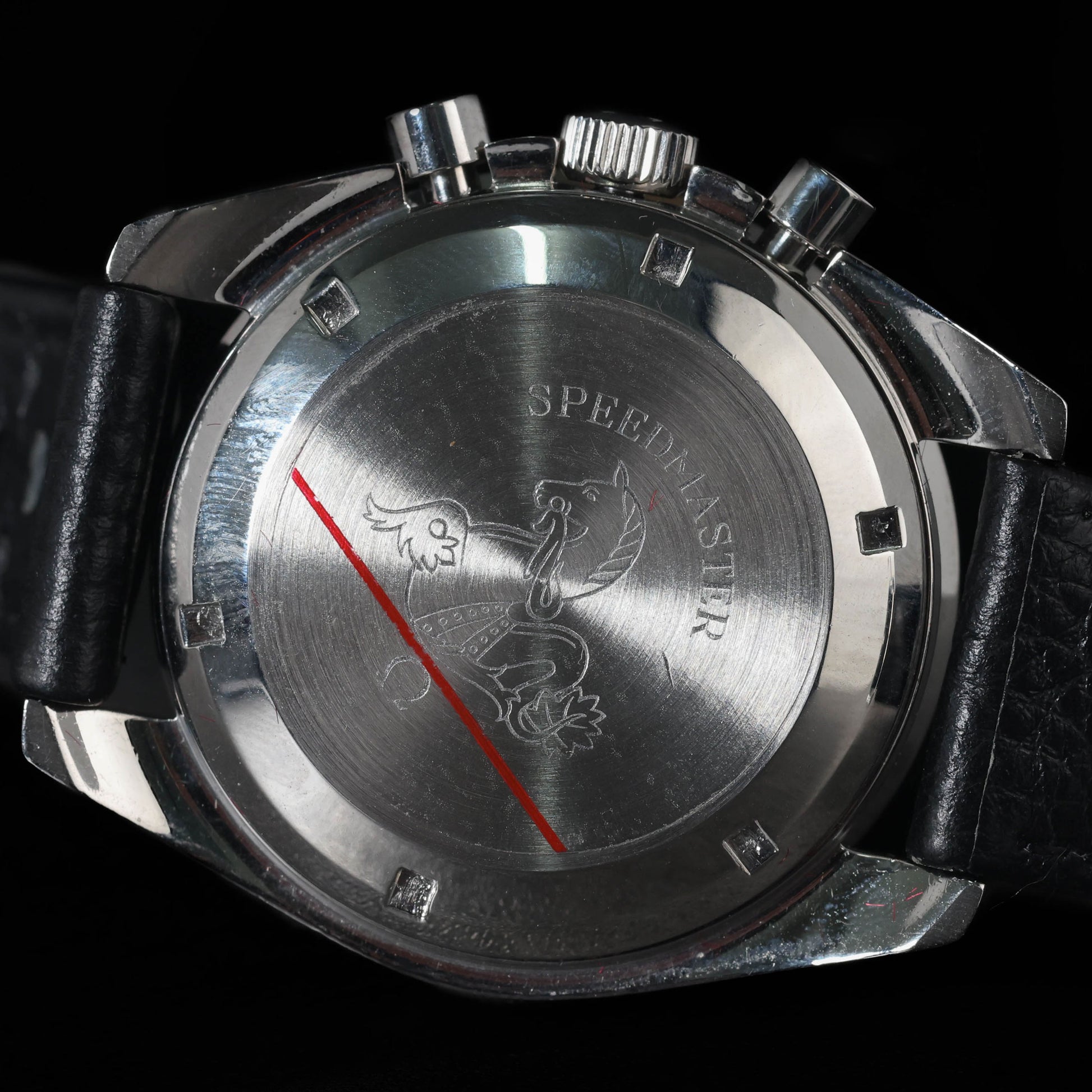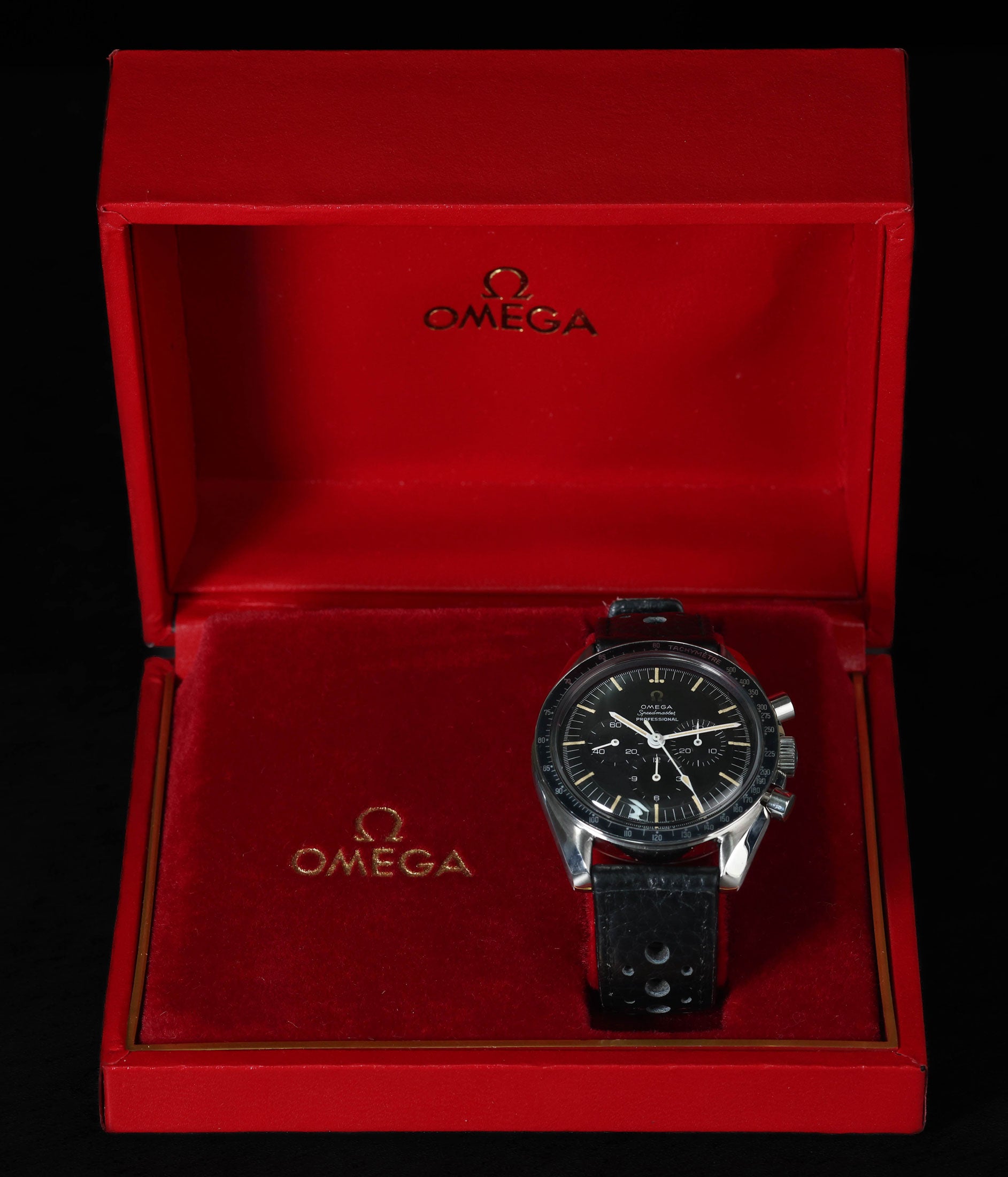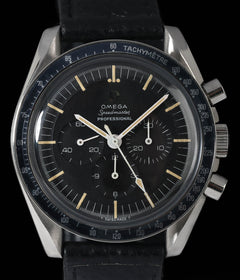Crown Vintage
Omega Speedmaster 145.012 42MM 1960s
Omega Speedmaster 145.012 42MM 1960s
Couldn't load pickup availability
Omega Speedmaster Ref. 145.012
The stainless-steel case is in very good overall condition with crisp, sharp lugs and only minimal surface marks visible under close inspection. The fitted leather racing strap is likewise in great condition, displaying supple leather and firmly intact stitching. The dial presents cleanly, its original tritium developing an appealing, even patina without blemishes to the printing. Hands are in very good condition with intact lume—no cracking observed—and share the same attractive ageing tone as the dial plots. Crystal remains clear, crown operates smoothly, and all functions perform as intended.
Share
Why we love this watch
Why we love this watch
Omega Speedmaster 145.012: the last Calibre 321 before the Moon
Introduction
Before Neil Armstrong left his Speedmaster in the Lunar Module and Buzz Aldrin stepped onto the Sea of Tranquillity, Omega was already perfecting the chronograph that would gain the “Moonwatch” title. The reference 145.012-64 sits at that exact tipping-point. Produced in the second half of 1964—as Omega finalised design tweaks for NASA qualification but two full years before the Apollo programme’s first crewed flights—it captures every hard-earned lesson from motorsport, engineering test stands and early space-flight simulations. The watch still beats with the hand-finished Calibre 321 column-wheel movement, wears the now-familiar 42 mm asymmetric “Professional” case with crown-guard bulge, and carries the dot-over-90 tachymeter bezel relied upon by pit-lane timers. In short, the 145.012-64 embodies the last stage of Speedmaster evolution before the reference reached the launchpad, making it the pre-Moon Speedmaster par excellence.
Design evolution
Case and bezel
The 145.012-64 keeps the twisted-lug case first seen on the 105.012, but Omega thickened the crystal gasket and altered pusher geometry to improve hermetic sealing for NASA’s thermal-vacuum trials. Measuring 42 mm across and 48 mm lug-to-lug, the shell mixes radial brushing on the upper surface with mirror-polished chamfers that accentuate the lug twist. Early batches feature “fat-neck” mushroom pushers; later 1964 production moves to a slimmer neck that would become standard through 1968.
Wrapping the case is a black anodised aluminium bezel with a BASE 500 scale and the coveted “dot-over-90”. The insert’s serif numerals and flat-foot “7” mark it out immediately as a mid-sixties Speedmaster. Beneath lies a flat steel tension ring that helps secure the domed Hesalite crystal—crucial for the vacuum testing NASA would initiate the following year.
Dial, hands and crystal
Omega retained a matte-black stepped dial for optimal contrast in glare-prone environments. The applied metal logo that collectors prize is still present on most -64 examples, though printed logos creep in towards the end of the sub-reference’s run as suppliers pre-tooled for 1965 demand. Tall tritium plots—cut by hand and installed with tweezers on the assembly line—stand proud of the minute track and glow an olive-green hue under UV inspection.
The -64 marks the transition from alpha to baton hands: broad, flat-ended minute and hour sticks improve night-time legibility, while an elongated spear chronograph seconds hand reaches cleanly to the outer fifth-second indices. All sit below a domed Hesalite crystal whose acrylic dome refracts light, lending the dial a creamy vignette at oblique angles that sapphire-equipped re-issues never quite replicate.
Case-back engraving
A double-step screw back carries the Seahorse medallion and the word “Speedmaster” arched above. “Professional” appears inside the case only late in the -64 run, making earlier pieces among the last Speedmasters to omit the designation externally while already wearing the asymmetric case that defines the Professional era.
Calibre 321: mature form of a classic
At the heart of the 145.012-64 beats Omega’s celebrated Calibre 321, a 17-jewel, 18,000 vph, column-wheel chronograph born from Lemania’s CH27. The movement’s lateral clutch and Breguet overcoil balance offer shock tolerance and positional stability that NASA engineers found essential for manned-spacecraft duty.
For the -64 Omega revised the coupling-clutch spring and enlarged the pusher caps, changes that give a crisper actuation than earlier 105.003 pieces. The bridges retain their Geneva waves and pink-gold wash; the brass chronograph wheels are rhodium-plated to resist corrosion in humid test chambers. With a 44-hour reserve and proven tolerance to –18 °C / +93 °C, Calibre 321 in -64 guise represents the mechanism’s final factory specification before production lines began the shift towards the cheaper, cam-actuated Calibre 861.
NASA context and pre-Moon relevance
While the 145.012-64 never flew to the Moon—those honours fell to later -67 and -68 batches—it provided much of the hardware for NASA’s extensive pressure, vibration and decompression testing during 1965-66. Archival SC-9206 qualification logs list several -64 serial ranges, and period photographs show astronauts wearing -64 Speedmasters during centrifuge sessions at the Manned Spacecraft Center in Houston.
These watches therefore shaped the performance envelopes that defined every subsequent Apollo crew issue. When Collins, Duke and Lovell later strapped on their -67 Speedmasters in space, they were relying on standards proven by the earlier -64 test pieces.
Production nuances
Omega’s records suggest the -64 sub-reference ran for roughly nine months, with serial numbers clustered between 22.6 million and 24.2 million. Within that range collectors track three dial styles (applied-logo tall plots; applied-logo flat plots; printed-logo flat plots), two bezel fonts and the push-button neck change noted earlier.
Output likely totalled fewer than 12,000 units—considerably scarcer than the 27,000-odd 145.012-67/-68 watches that followed. Surviving examples with unpolished cases and intact DON bezels are therefore thin on the ground, especially in Australia where the majority of mid-sixties Speedmasters arrived later via US servicemen on R&R from Vietnam.
Wearing experience
The -64’s 42 mm case feels deceptively compact. Its 20 mm lug width and sweeping lyre contours help the watch sit flush on wrists down to 16 cm, and the curved Hesalite crystal keeps total height under 14 mm. The Hesalite’s warmth, combined with the deep-dish dial and tall tritium plots, gives the -64 an unmistakably vintage wrist presence that modern sapphire sandwich references can’t fully mimic.
Column-wheel pushers offer a notchy, mechanical “click-clack” that enthusiasts liken to chambering a rifle bolt—sharper than the smoother, rubbery feel of cam-switched 861 models. Winding the 321 produces a silky, fine-tooth sensation, a reminder of the hand-finished gearwork that marked the end of Omega’s old-world production techniques.
Servicing realities
With Omega having reopened 321 component manufacture in 2019, maintenance on a -64 is no longer the parts-scavenger’s hunt it once was. Correct clutch springs, column wheels and chronograph wheels are available, though expensive. Collectors should guard original DON bezels: replacements are modern reproductions and visibly different on close inspection.
During routine service—ideally every five to seven years—watchmakers replace crown, pusher gaskets and the inner tension ring to preserve the -64’s modest water resistance. The original brass mainspring is best swapped for the modern white-alloy equivalent, extending service intervals without altering power reserve.
Final thoughts
The Omega Speedmaster 145.012-64 is the purest expression of the pre-Moon Speedmaster formula. It packages the hard-wearing asymmetrical case, the tactile Calibre 321 and the classic dot-over-90 bezel into their final pre-Apollo form, crystallising Omega’s decade-long journey from motorsport timer to space-flight instrument. Scarcer than its -67 and -68 descendants yet carrying all the visual cues enthusiasts associate with the Moonwatch, the -64 stands as a mechanical bridge between racing circuits and launchpads—a chronograph suspended in the moment just before humankind took its most famous step.
Case & Bracelet
Case & Bracelet
- Case in very good condition, very minimal wear visible. Lugs sharp.
- Leather Racing strap in great condition.
Dial & Hands
Dial & Hands
- Dial in great condition, very nice patina formed.
- Hands in very good condition, no lume cracking. Very nice patina formed.
Warranty & Condition
Warranty & Condition
Crown Vintage Watches provides a minimum 3-month mechanical warranty on pre-owned watches, from the date of purchase.
The warranty covers mechanical defects only.
The warranty does not cover damages such as scratches, finish, crystals, glass, straps (leather, fabric or rubber damage due to wear and tear), damage resulting from wear under conditions exceeding the watch manufacturer’s water resistance limitations, and damage due to physical and or accidental abuse.
Please note, water resistance is neither tested nor guaranteed.
Shipping and insurance costs for warranty returns to us must be covered by the customer. Returns must be shipped via traceable courier. Return shipment must be pre-paid and fully insured. Collect shipping will be refused. In case of loss or damages, the customer is liable.
Our Pledge
At Crown Vintage Watches, we stand by the authenticity of every product we sell. For added peace of mind, customers are welcome to have items independently authenticated at their own expense.
Condition
Due to the nature of vintage timepieces, all watches are sold as is. We will accurately describe the current condition and working order of all watches we sell to the best of our ability.
Shipping & Refund
Shipping & Refund
